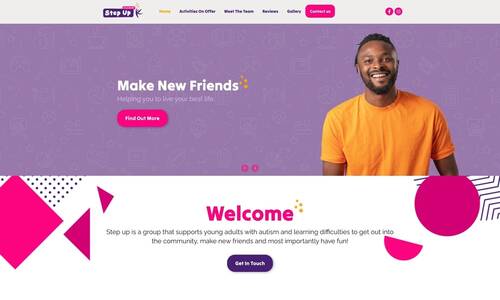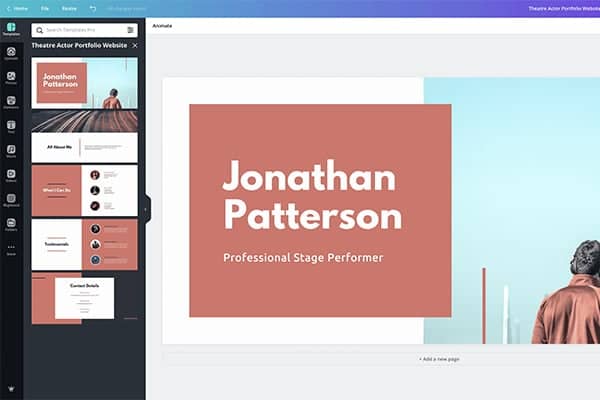Website Design in copyright: User-Friendly, Fast, and Responsive Websites
Website Design in copyright: User-Friendly, Fast, and Responsive Websites
Blog Article
Achieve Online Success With User-Friendly Website Style
In the progressively affordable digital landscape, the layout of a web site can be a critical consider figuring out an organization's success. Straightforward design not only boosts the total user experience yet also affects crucial metrics such as involvement, conversion, and retention prices. By focusing on intuitive navigation and accessibility, organizations can promote an extra inclusive atmosphere that attract a more comprehensive audience. Nonetheless, comprehending the specific principles and features that add to reliable style needs a closer examination of present trends and best practices, which can reveal possibilities for considerable enhancement.
Importance of User Experience
Customer experience (UX) plays a crucial role in the success of a site, as it directly affects customer satisfaction and involvement. A positive UX guarantees that visitors can navigate the website effortlessly, access details quickly, and full wanted activities, such as authorizing or making a purchase up for a newsletter, without frustration.
In a digital landscape where competition is intense, an internet site that prioritizes UX can significantly enhance brand name commitment and retention. Users are most likely to return to a site that provides a smooth experience, creating a cycle of repeat sees and increased consumer lifetime value. In addition, efficient UX layout can decrease bounce rates, as users are less inclined to leave a website that satisfies their needs efficiently.
Moreover, search engines increasingly think about customer experience aspects when ranking websites. Thus, investing in individual experience is vital for attaining long-term success in the electronic industry.
Trick Principles of User-Friendly Style
An effective user-friendly layout rests on several essential concepts that boost functionality and access. Primarily is simpleness; a clutter-free interface makes it possible for individuals to browse easily, decreasing cognitive tons. This principle emphasizes the significance of clear and concise material, permitting customers to find information swiftly without unneeded distractions.
Consistency is one more essential element. Consistent use colors, typefaces, and formats fosters knowledge and constructs depend on. Customers should feel comfy as they check out different areas of the web site, knowing that similar elements represent associated performances.
Reliable typography additionally plays a crucial role in straightforward layout. Understandable fonts, ideal dimensions, and adequate spacing ensure that content is quickly understandable across numerous tools. Moreover, integrating intuitive aesthetic pecking orders helps users recognize crucial info and activities at a glance.

Necessary Features for Navigation
Reliable navigation is important for any type of user-friendly internet site, as it straight affects the overall individual experience. A well-structured navigating system allows individuals to locate details quickly and successfully, lowering irritation and raising interaction.
One important attribute is a intuitive and clear why not try this out food selection that categorizes content rationally - website design copyright. This food selection should be easily available from every page, often positioned at the top or on the side of the web site. Furthermore, including breadcrumb navigating helps customers comprehend their place within the site hierarchy and makes it simpler to backtrack
Search performance is an additional important part, enabling individuals to find certain web content without looking through multiple web pages. This function ought to be prominently shown and responsive to variants in input.
Additionally, a mobile-responsive design makes certain that navigating remains seamless across tools. As mobile use remains to rise, menus need to adapt to different display dimensions without compromising capability.
Lastly, visual signs such as highlighting the active web page and making use of hover impacts can boost customer interaction. By incorporating these important features, site developers can produce a navigational anchor experience that is not only user-friendly however additionally encourages expedition and retention.
Accessibility Factors To Consider
Accessibility factors to consider are integral to developing an easy to use website that caters to all people, despite their capacities or impairments (website design copyright). Sites have to be designed to ensure that users with visual, acoustic, cognitive, or motor impairments can engage with material efficiently. This begins with adherence to the Web Material Accessibility Guidelines (WCAG), which supply a framework for making digital content extra available
Trick methods consist of using descriptive alternate text for pictures, making sure shade comparison proportions meet accessibility requirements, and supplying subtitles for multimedia components. In addition, the navigation should be instinctive, permitting customers to tab with web links and interactive elements easily. Applying keyboard navigation is critical for those not able to make use of a computer mouse.
Moreover, succinct and clear language boosts comprehension for users with cognitive restrictions. Forms visit this site right here must be simple, with labels and instructions that are very easy to comprehend. Regular ease of access screening, including individual responses from individuals with specials needs, can assist enhance and identify barriers use.
Measuring Layout Success

User feedback studies and use testing are essential in assessing the efficiency of design components. These techniques allow developers to gather direct input from customers, recognizing pain points and locations for enhancement. Additionally, tracking heatmaps can expose where individuals click most often, assisting to inform format adjustments and content prioritization.
Google Analytics can track user actions, exposing patterns that show whether the style is assisting in or hindering the customer journey. Eventually, a successful website layout not only meets service purposes yet likewise fosters a pleasurable and smooth customer experience, driving interaction and loyalty over time.
Conclusion
Prioritizing customer experience via simpleness, user-friendly navigation, and reliable feedback systems not only boosts customer interaction and fulfillment yet additionally cultivates brand name loyalty. Integrating vital navigation features and access factors to consider further makes certain that all customers can successfully connect with the website.
Websites need to be developed to guarantee that customers with visual, auditory, cognitive, or motor disabilities can involve with content effectively.Determining style success includes evaluating how efficiently a website meets its desired objectives while giving a favorable user experience. Google Analytics can track customer actions, disclosing patterns that suggest whether the design is facilitating or preventing the individual trip. Ultimately, a successful internet site design not just meets business purposes yet likewise fosters a smooth and pleasurable customer experience, driving interaction and commitment over time. Prioritizing customer experience via simpleness, intuitive navigation, and reliable comments systems not only improves individual engagement and complete satisfaction but likewise cultivates brand name commitment.
Report this page